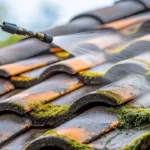Creating a roof garden is an exciting way to transform unused space into a vibrant green sanctuary. With growing urbanization, the idea of having a garden on your rooftop has become increasingly appealing. In this article, we will delve into the roof garden construction basics to help you understand how to build your own rooftop paradise.

What is a Roof Garden?
A roof garden is a garden on the roof of a building. It can be designed to grow various plants, vegetables, and even small trees. This not only enhances the aesthetic appeal of your home but also offers environmental benefits.
Benefits of Having a Roof Garden
- Environmental impact: Roof gardens help in reducing the urban heat island effect.
- Energy savings: They provide natural insulation, reducing energy costs.
- Improves air quality: Plants absorb pollutants and produce oxygen.
- Increases property value: A beautiful rooftop garden can increase the value of your property.
Getting Started with Roof Garden Construction Basics
Before diving into the construction, it’s crucial to assess your roof’s condition and load-bearing capacity. Consulting with professionals to evaluate these factors is highly recommended.
1. Assessing Roof Suitability
The first step in roof garden construction is assessing whether your roof can support the additional weight of a garden. Structural integrity is key to ensuring the safety and longevity of your garden.
2. Selecting the Right Plants
Choosing the right plants for your roof garden is vital. Opt for plants that are drought-resistant and can withstand high winds and direct sunlight.
3. Waterproofing and Drainage
Proper waterproofing and drainage are crucial to prevent water damage to your roof. It’s essential to install a high-quality waterproof membrane and an efficient drainage system.
Construction Steps for Roof Gardens
1. Installing a Waterproof Membrane
Installing a waterproof membrane is the foundation of roof garden construction. This layer protects your roof from water damage and ensures the longevity of your garden.
2. Creating a Drainage Layer
A drainage layer is essential to prevent water accumulation and root rot. Materials like gravel or specialized drainage mats are commonly used.
3. Adding a Filter Layer
The filter layer prevents soil from clogging the drainage system. Geotextiles are often used for this purpose.
4. Soil and Planting
Once the base layers are in place, the next step is to add soil and plant your chosen vegetation. Ensure the soil is lightweight and nutrient-rich.
Maintenance Tips for Roof Gardens
Maintaining a roof garden requires regular care. Here are some tips:
- Water your plants according to their needs, especially during dry spells.
- Regularly check for pests and diseases.
- Prune plants to encourage healthy growth.
- Inspect the waterproofing and drainage systems periodically.
Challenges in Roof Garden Construction
Constructing a roof garden comes with its own set of challenges:
- Weight limitations: Ensuring your roof can support the garden’s weight is crucial.
- Climate considerations: The plants must be suitable for local climate conditions.
For further reading on the challenges and solutions in green roofing, visit Green Roofing FAQs.
Cost Considerations
Understanding the cost implications is essential when planning a roof garden. Costs vary depending on the size, design, and material choices.
For a detailed cost analysis, check out Cost vs Benefit Green Roofing.
Inspiration from Around the World
Roof gardens are popular worldwide and serve as inspiration for new projects. Learn about some impressive green roofs around the world.
Conclusion
Building a roof garden is a rewarding venture that offers numerous benefits. By understanding the roof garden construction basics, you can create a beautiful and sustainable outdoor space that enhances your home’s value and contributes to environmental sustainability.

FAQs
1. What types of plants are best for roof gardens?
Drought-resistant plants that can withstand high winds and direct sunlight are ideal for roof gardens.
2. How much does it cost to build a roof garden?
The cost varies based on size, design, and material, but understanding the cost vs benefit is crucial.
3. How do I maintain a roof garden?
Regular watering, pest control, and system checks are essential for maintaining a healthy roof garden.
This article contains affiliate links. We may earn a commission at no extra cost to you.








